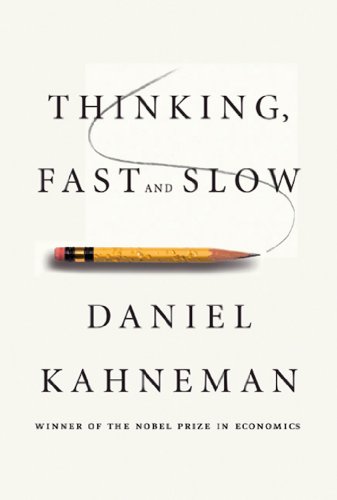Step into the fascinating world of human psychology as we explore the art of decoding the unspoken. Have you ever wished you could read people’s minds and understand their true thoughts and intentions? Well, you’re not alone.
Mastering the skill of reading people goes beyond just observing their body language; it involves understanding the subtle cues, tones, and microexpressions that reveal what someone is truly thinking and feeling.
In this article, we will delve into the secrets of deciphering the unspoken messages in communication. Whether you’re in business negotiations, social interactions, or even just everyday conversations, being able to read people’s minds can give you a powerful advantage. By understanding the hidden signals, you can build stronger connections, anticipate their needs, and even influence their decisions.
We’ll explore techniques to help you recognize common body language gestures, interpret facial expressions, and pick up on verbal cues that reveal someone’s true emotions. Unlock the mysteries of non-verbal communication and elevate your interpersonal skills to new heights.
Get ready to dive into the world of mind reading and discover how to become a master communicator. Join us on this captivating journey of understanding the unspoken.

Thinking Fast and Slow
By Daniel Kahneman
⏱ 14 minute reading time
🎧 Audio version available
The importance of communication and understanding
Effective communication is the foundation of successful relationships, both personal and professional. It goes beyond just words; it’s about understanding the underlying messages and emotions conveyed through nonverbal cues. When we can accurately interpret these cues, we gain valuable insights into a person’s thoughts and feelings, allowing us to respond appropriately and forge meaningful connections.
Nonverbal communication, which includes body language, facial expressions, and tone of voice, accounts for a significant portion of our overall communication. Research suggests that up to 93% of communication is nonverbal. This means that understanding and decoding these unspoken signals is essential for effective communication.
The basics of nonverbal communication
Before diving into the intricacies of decoding nonverbal cues, it’s important to understand the basics. Nonverbal communication is a complex system of signals that can vary across cultures and individuals. However, there are some universal gestures and expressions that can help us decipher the unspoken messages.
Body language plays a crucial role in conveying emotions and intentions. Paying attention to someone’s posture, gestures, and physical movements can provide valuable insights into their level of comfort, confidence, or discomfort. For example, crossed arms may indicate defensiveness or resistance, while open, relaxed body language suggests openness and receptiveness.
Facial expressions are another key aspect of nonverbal communication. Our faces are incredibly expressive, and even the slightest twitch of a muscle can reveal our true emotions. Learning to recognize and interpret facial expressions can give us a deeper understanding of someone’s feelings. For instance, a genuine smile involves the activation of specific facial muscles, while a forced smile can be easily detected by the absence of these muscle movements.
Decoding facial expressions and body language
Decoding facial expressions and body language requires a keen eye and an understanding of the underlying emotions they convey. While some expressions, such as happiness or sadness, are relatively easy to recognize, others can be more subtle and nuanced.
One way to improve your ability to decode facial expressions is by studying the seven universal emotions: happiness, sadness, anger, fear, surprise, disgust, and contempt. Each of these emotions has distinct facial expressions associated with it, although the intensity may vary depending on cultural norms.
Body language is another powerful indicator of a person’s true thoughts and feelings. It encompasses a wide range of gestures, postures, and movements that can reveal a person’s level of comfort, interest, or even deception. For example, leaning in towards someone while they’re speaking shows attentiveness and engagement, while avoiding eye contact may indicate discomfort or dishonesty.
Understanding verbal cues and tone of voice
While nonverbal cues provide valuable insights into a person’s thoughts and emotions, verbal cues are equally important in decoding the unspoken. The words we choose, the tone of our voice, and the pace of our speech all contribute to the hidden messages we convey.
When deciphering verbal cues, it’s essential to pay attention not only to what is being said but also how it is being said. For example, a sarcastic remark may be accompanied by a sarcastic tone of voice and exaggerated gestures, indicating that the speaker does not genuinely mean what they say.
Tone of voice can reveal a lot about a person’s emotional state and intentions. A calm and steady tone may indicate confidence and sincerity, while a raised or shaky voice may signal anger or nervousness. By listening carefully to these subtle cues, we can gain a deeper understanding of someone’s true feelings.
Mastering active listening skills
Active listening is a fundamental skill for decoding the unspoken. It involves fully engaging with the speaker and paying attention to both their verbal and nonverbal cues. By actively listening, we show respect and empathy towards the speaker, which encourages them to open up and communicate more honestly.
To become an active listener, it’s crucial to eliminate distractions and give your full attention to the speaker. Maintain eye contact, nod to show understanding, and provide verbal and nonverbal feedback to demonstrate that you are actively engaged in the conversation. By doing so, you create a safe and supportive environment for open communication.
Recognizing and interpreting emotional signals
Emotions are an integral part of human communication, and being able to recognize and interpret emotional signals is essential for effective communication. Emotions can be conveyed through facial expressions, body language, and vocal cues, providing valuable insights into a person’s state of mind.
Recognizing and understanding these emotional signals allows us to respond appropriately and empathetically. For example, if someone appears sad or upset, offering a comforting gesture or asking if they would like to talk can show that you genuinely care. Similarly, if someone looks excited or enthusiastic, acknowledging their enthusiasm and sharing in their excitement can strengthen your connection.
Strategies for effective communication
Decoding the unspoken is just one aspect of effective communication. To become a master communicator, it’s essential to develop a range of strategies that facilitate clear and meaningful interactions. Here are some strategies to consider:
- Be present: Give your full attention to the person you’re communicating with. Avoid distractions and genuinely listen to what they have to say.
- Ask open-ended questions: Encourage the speaker to share more by asking open-ended questions that go beyond simple yes or no answers. This allows for a deeper and more meaningful conversation.
- Practice empathy: Put yourself in the other person’s shoes and try to understand their perspective. This will help you respond with empathy and build stronger connections.
- Use active body language: Mirror the other person’s body language to show that you’re engaged and interested. Maintain eye contact, nod, and use appropriate gestures to convey your understanding.
- Be mindful of your own nonverbal cues: Pay attention to your own body language, facial expressions, and tone of voice. Ensure that your nonverbal cues align with your intended message.
Building empathy and connecting with others
Empathy is a crucial component of effective communication and understanding the unspoken. It involves not only recognizing and understanding someone’s emotions but also being able to share in those emotions. By building empathy, we create deeper connections and foster trust in our relationships.
To build empathy, it’s important to actively listen and validate the other person’s feelings. Acknowledge their emotions and show understanding and support. Avoid judgment or dismissive responses, as they can hinder open communication.
Related: 10 Simple Psychological Tricks That Actually Work
Overcoming communication barriers
Effective communication can sometimes be hindered by various barriers, such as language barriers, cultural differences, or personal biases. Overcoming these barriers requires open-mindedness, patience, and a willingness to learn and adapt.
If you encounter a language barrier, consider using visual aids, gestures, or even translation tools to facilitate understanding. When faced with cultural differences, educate yourself about different cultural norms and practices to avoid misunderstandings. Finally, be aware of your own biases and strive to be open-minded and respectful towards others’ perspectives.
The power of understanding and effective communication
Decoding the unspoken is a powerful skill that can enhance your communication abilities and deepen your connections with others. By paying attention to nonverbal cues, recognizing emotional signals, and practicing active listening, you can become a master communicator.
Remember, effective communication is not just about the words we say; it’s about understanding the unspoken messages conveyed through body language, facial expressions, and tone of voice. By harnessing the power of decoding the unspoken, you can build stronger relationships, influence others, and navigate the complexities of human interaction with confidence and empathy.
So, step into the world of mind reading and master communication. Unlock the mysteries of nonverbal communication and elevate your interpersonal skills to new heights. Start decoding the unspoken, and watch as your understanding and influence soar.
Start Your Snapreads Free Trial

With the Snapreads app, you get the key insights from the best nonfiction books in minutes, not hours or days. Our experts transform these books into quick, memorable, easy-to-understand insights you can read when you have the time or listen to them on the go.
